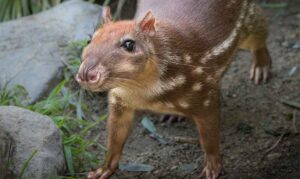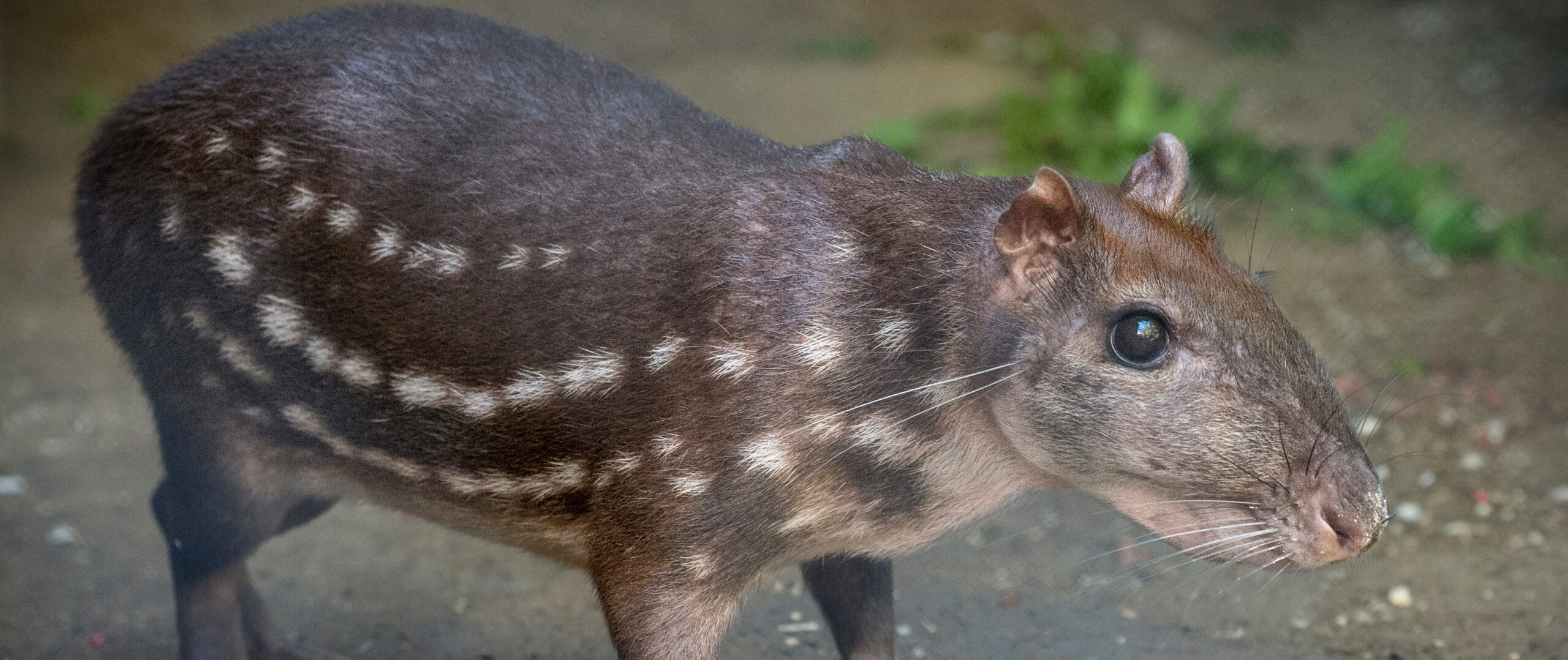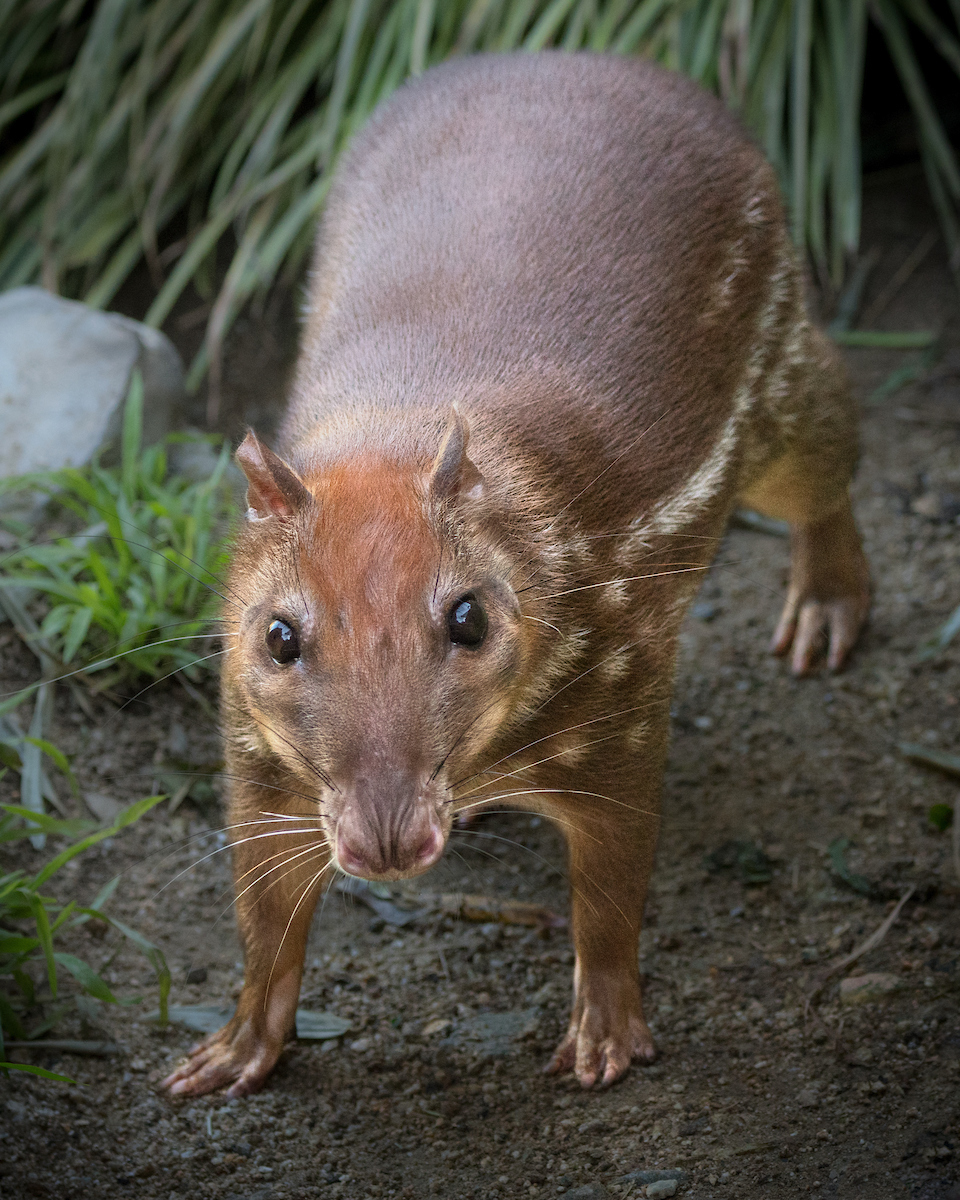About
Pacas are related to guinea pigs, capybaras, and agoutis. The lowland paca (also known as the spotted paca) is found at lower elevations than their cousins, the mountain pacas (Cuniculus taczanowskii). These large rodents forage at night along established pathways, always close to water. When danger threatens, they often flee to the water. They are excellent swimmers and can stay submerged for several minutes.
Pacas are considered ecosystem engineers because they dig burrows, which is where they spend the daylight hours, emerging at night to forage. Burrows are typically six or seven feet below the ground on stream banks and slopes and have multiple exits. Less-used exits are camouflaged with leaves and sticks. They may excavate up to four different burrows within their territory. Abandoned burrows provide shelter for other animals. Pacas live in monogamous pairs. Females may have two litters a year with one offspring born at a time. Mothers may care for their young for as little as eight weeks or up to six months. The male and female are very independent, usually living in separate burrows, and typically patrolling different parts of their territory. Males will defend their territories from other males and competing species such as agoutis. Females will defend the territory against other females. A uniquely structured jaw acts as a resonator that amplifies the low rumbling warning call made by pacas defending their territories. If this fails to intimidate the interloper, they will attack with their large incisors. Predators include foxes, ocelots, maned wolves, and jaguars. Pacas are an important game animal for subsistence farmers throughout their range. In some areas of Mexico and Belize pacas are kept as micro-livestock.


Habitat
The rainforests of Argentina, Brazil, Mexico, and Paraguay.
Diet
These rodents are herbivores, eating fruit, nuts, tubers, leaves, roots, stems, and seeds. They feed primarily on fallen fruit, preferring mangos, papaya, and avocados. Pacas play an important role in the ecosystem by dispersing seeds, which supports fruit tree populations.
Physical Characteristics
Body length ranges from 20 to 30 inches. Pacas weigh between 13 and 30 pounds with males a bit larger than females. Their lifespan is estimated at 12 years.
LOCATION IN THE ZOO
You’ll find this animal in the South America section. See Zoo Map.



